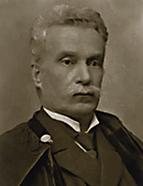

To distinguish him as a researcher equipped with both a theoretical and practical framework, a master of research methodology — and also an informed polemicist, as evidenced in his trilogy on the reform of fine arts education (1877, 1878, 1879) — we can examine his publications from the late '70s. In Albrecht Dürer... (1877), fourth instalment of Arqueologia Artística [Artistic Archaeology], Joaquim de Vasconcelos summarises the philosophical endeavour of his lifetime: to compile the materials for a history of the Portuguese Renaissance in the 16th century, drawing on European historiography, with particular emphasis on modern German scholarship.
Joaquim de Vasconcelos' philosophy regarding art history should be seen as part of the broader effort to establish the discipline on a scientific basis, aligning with the tradition pioneered by the German historian Leopold von Ranke. Ranke, through his renowned seminars, emphasised presenting the results of research alongside the methodologies used to obtain them, encouraging students to engage directly with sources and explore archives. Like Ranke, Vasconcelos was focused on researching specific historical periods, seeking to understand historical continuity as the key to grasping national specificity. Vasconcelos follows this path, as he himself notes, inspired by and in dialogue with some of the figures who best symbolise the development of modern German art history. Among these are the historian and writer Franz Theodor Kugler, the art historian, jurist, and traveller Karl Schnaase, and the art historian and professor of architecture Wilhelm Lübke. Like them, Vasconcelos shares the conviction that connecting different historical periods and explaining them in relation to one another is essential, and so is the publication of artistic inventories as a way of laying a solid foundation for historiographical study — and with which he cross-references information in order to connect Portuguese artistic movements to international ones (Conde de Raczynski… [Count of Raczynski...], 1875, p. 36 and 41-42).
Joaquim de Vasconcelos's efforts were driven as much by his concerns for artistic education as by his desire to communicate with the public, evident in his extensive critical commentary on the work of the government commission appointed in 1875 to reform the fine arts. In the Porto newspaper A Atualidade and across three volumes published sequentially, he offers a comparative analysis of the state of art education, and also theorises about the pursuit of harmony between art and industrial production, and about the knowledge of cultural heritage as a means of fostering intellectual and moral wealth, points capable of building a new artistic renaissance, given the ruin of monuments and the dispersal and alienation of works of art.
This work is financed by national funds through FCT - Foundation for Science and Technology, I.P, in the scope of the projects UIDB/04311/2020 and UIDP/04311/2020.
